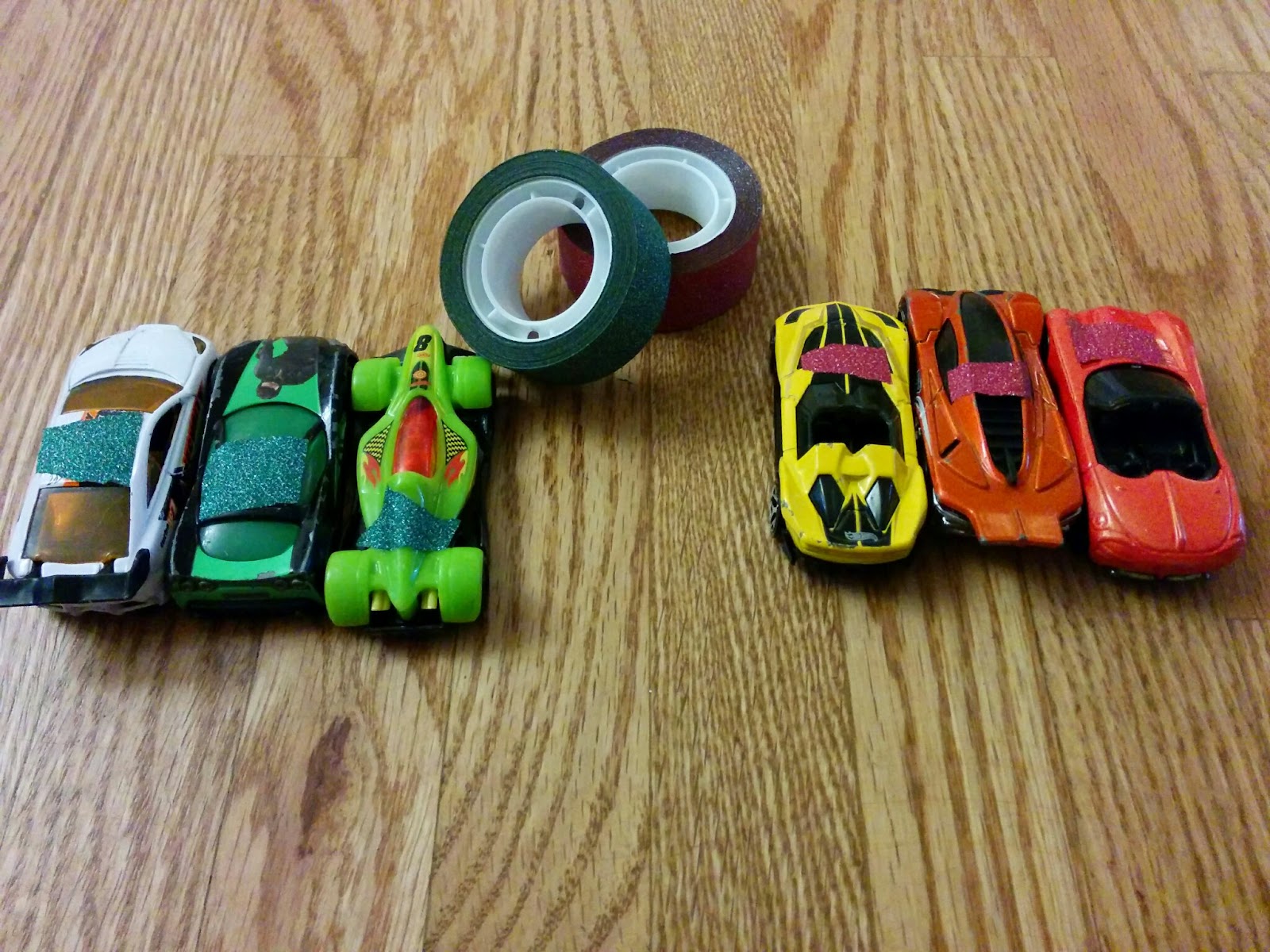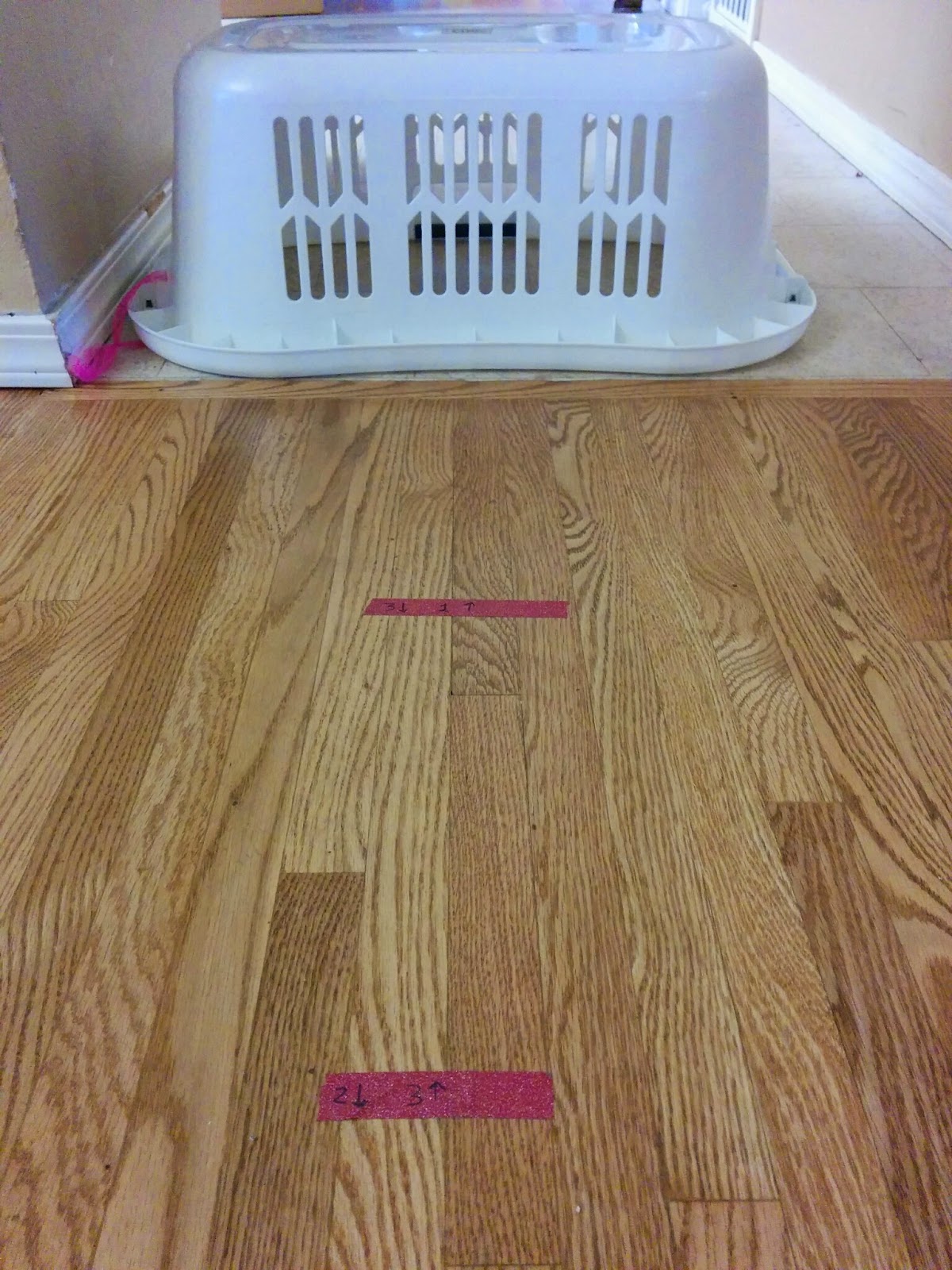My four-and-a-half year old daughter is only just now occasionally interested in Math Dice and needs a lot of help to play, but was willing and able to play the Yahtzee Jr variant described below.
Yahtzee (Very) Junior
Materials- 1 sheet of paper per player
- 2 dice
- A handful of buttons or other markers - at least 12 per player, preferably 20 or more.
(You can always print out the sheets provided at the link above if you don't have time or inclination for the setup activities. )
- Use a marker to divide each sheet of paper into a 12-celled grid.
- Depending on your kids' level, have each player write the numbers between 1 and 12, one per cell. I lightly penciled in each number and had my kids (ages 4 and nearly 6) trace them.
- I also had my kids mark the corresponding number of dots in each cell.
- Immediately place a button marker over the 1.
- Each player rolls two dice, adds them together, and places a button over the corresponding number.
- The first player to mark out all 12 numbers wins.
Even so, we ran out of patience before everyone had rolled a 2 or a 12. When it was clear the kids were about done, I declared that the player ahead after the next three turns would be the winner. As it turned out, it was a tie!
In future games, I think I'll add a third die and on each turn the player will have the option to roll 1, 2, or 3 dice - at least once the numbers between 3 and 10 are taken care of. Get a little strategy in there!
Math Dice
Math Dice is published by ThinkFun. You can buy Math Dice Jr here (if it's ever in stock), as well as read the official rules.
But since the materials are so basic I felt no need to spend $8 on a custom set.
Materials
- 5, 6 sided dice.
- 1, 12 sided die. You can also use a 10 or even a 20 sided die if preferred.
- Scoring board and one scoring token per player (we use buttons.)
- (Optional) An Altoids tin to store everything
- (Optional) A flat tray with raised edges and/or a piece of felt to cut down on clatter and lost dice
Of course, you probably won't find 10 or 12 sided dice in a pack at the dollar store, but you should be able to find them fairly cheaply at a game store or even a teacher supply store such as the Learning Palace. Don't forget to check your husband's D&D stash!
I actually lucked out and found a large tube of 60 or so dice of all shapes and sizes at Target for about $12. I haven't found a similar collection online, but you may be more fortunate.
Setup
We drew our own score track on a sheet of paper. Actually, we've made several since my son keeps wanting to make the game longer and I keep trying to design one that folds flat and fits inside of the Altoids tin!
In any case, I simply drew a rounded "N" shape and subdivided into cells. Our current board has 30 of them.
At my son's request, we also added two bridges - think "ladders" in the classic "Chutes and Ladders" game.
Play
Roll all 5 6-sided dice and the 12 sided dice. The latter is your target number.
The official rules allow any combination of addition or subtraction to obtain the target number, but my son is not quite 6 and this is too much for him. We use addition only at this point.
Score one point for each die used to reach the target number, moving your counters along the score board. The first one to the end wins!
Edge cases:
We decided that players must reach the end by exact count - no using four dice when only two spaces remain.
My son didn't think it was right for two players to share the same space, so we eventually decided that if you land on your opponent's space, he/she is bumped backwards one space.
If by chance it is impossible to achieve your target number, we've chosen to allow a re-roll all of the 6-sided dice.
As my son has improved in his addition skills, we have slowly been incorporating subtraction into the mix. For the moment, it is only legal when the target die shows a 4 or less. And for now we're sticking to either-or, not both.


.jpg)




